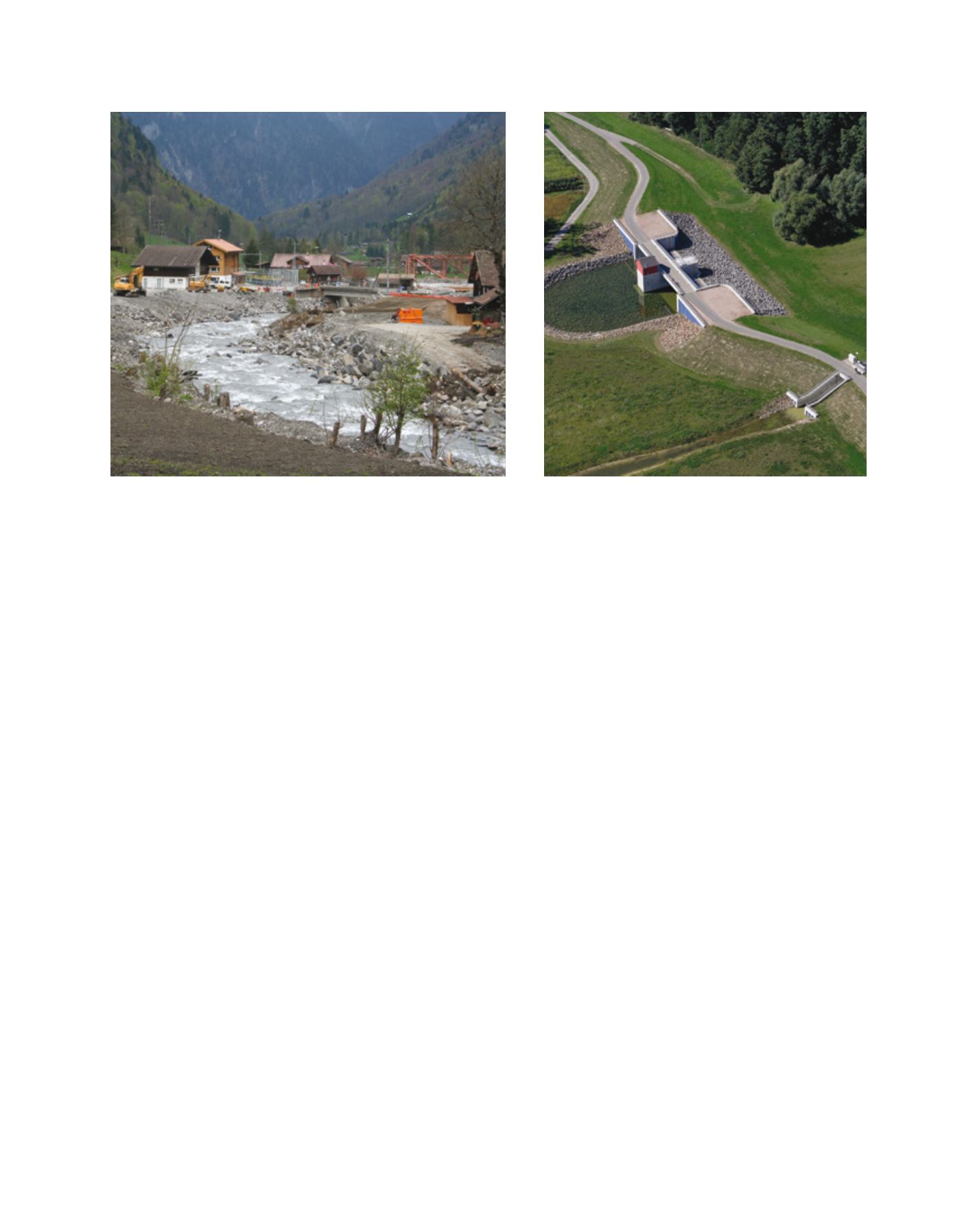

[
] 60
T
ransboundary
W
ater
M
anagement
the climate model output used for IPCC AR5. Each
institution brings its own expertise, observed data and
models. One question to be answered with this analy-
sis relates to the RheinBlick2050 results and the extent
to which these are still valid with regard to IPCC AR5.
CHR events
In recent decades CHR has organized several conferences,
symposia and workshops, with themes selected from a
scientific point of view or as the closing events of large CHR
studies. They include workshops on sediment transport
(2003, 2007 and 2008), climate change (2003), extreme
discharges (2005) and flood forecasting and ensemble
predictions (2006 and 2010), as well as the closing sympo-
sium of the RheinBlick2050 project in 2010.
6
Future projects and tasks
In spring 2014 CHR will organize the new first spring
seminar in combination with biannual CHR meeting
in Austria. The series of spring seminars will start with
the ‘Impact of socioeconomic changes to the discharge
regime in the Rhine catchment’. The seminar output
may lead to a new project.
Concerning the future, the tasks agreed during CHR’s
foundation are still valid and important, while the
commission’s approach has become increasingly multi-
functional and multidisciplinary. The need for enough
water of good quality, as well as for maintaining a safe
environment for livelihoods, is still growing.
Another special event will come in 2020, when a new
monograph on the Rhine will be published celebrating
the 50th anniversary of CHR – and commemorating the
fact that all CHR member states will have been taking
care of the catchment and solving problems together
for half a century.
The starting point for morphological analyses is bed level surveys.
These are combined with sediment transport measurements in order
to get data on the sediment load and on the mechanism of sedi-
ment transport. Echo soundings and transport measurements will
not answer questions such as where the sediments come from and
where are they going, or how changes in one part of the catchment
are related to other regions. Therefore, a sediment budget is needed,
incorporating the collection of data and analyses to check the quality
of measurements and available datasets, fill in the data gaps and
identify sources and sinks. This action incorporates quite a challenge
because maximum data density is found in the navigation channel
but data density is at a minimum next to the navigation channel, in
floodplains and groyne fields and at tributaries. Another challenge lies
in the varying quality and methods used in the several river reaches
and countries. Due to the number of existing gaps (data, data gaps
and a need for regional data), a variety of assumptions were made.
A strategy has been developed based on a status quo combined with
ideas on how to improve the situation around the gaps.
Continuation of the RheinBlick2050 study is planned under the
umbrella of ‘Climate impact studies in the Rhine basin’. Compared
to the regional climate models used in RheinBlick2050,
5
there is
now a much larger ensemble (~200 runs) of new global climate
models available in the Coupled Model Intercomparison Project
Phase 5 (CIMP5) data repository. These models are also used for
the Intergovernmental Panel on Climate Change (IPCC) Fifth
Assessment Report (AR5), to be published in 2013.
The Royal Netherlands Meteorological Institute (KNMI) is analysing
the CIMP5 data in order to use it in updating the KNMI climate scenar-
ios. Cooperation with BfG and Deltares has begun to analyse this data
set and calculate corresponding river discharges for representative sets
of runs. The new KNMI scenarios will be published in autumn 2013.
The scope of this cooperation is, however, broader. It targets the
comparison methodologies and coordination involved in deriving
a common set of climate and discharge scenarios for the interna-
tional basins of the Elbe, Rhine and Meuse. It is largely based on
River regulation works in the Lütschine basin in Switzerland
Image: CHR
The works in the Polder Ingelheim, north of Mainz in Germany
Image: CHR


















